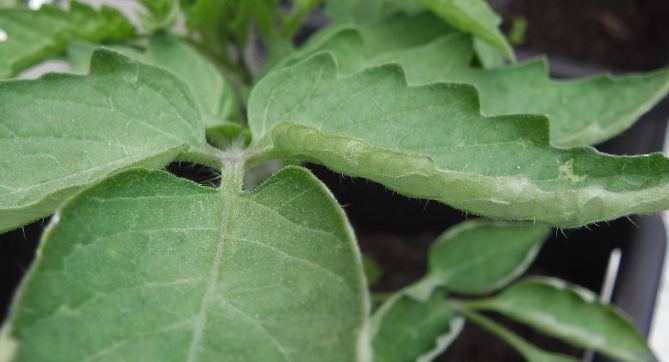It’s been a warm week for many of us in the UK and a quick look around the plants in my polytunnel shows that some tomato varieties cope better with the heat than others.
With the prospect of more warm weather to come, here are a few tips on how to manage tomato plants in hot weather.
Shade cloth
One of the most useful items to have at hand is garden fleece. It’s very good at protecting plants from direct sunlight – especially young or newly potted plants that have smaller roots systems.
Water spray
Not only essential for foliar feeding but excellent for reviving plants that are wilting!
Leaf curl and cupping
Leaves curling and cupping is a sign of heat stress. You may sometimes see a plant twist an entire leaf branch away from direct sunlight. Learning to read what a plant needs by its behaviour, especially through the leaves, is one of the most important aspects of tomato growing. However, some varieties curl, cup or roll their leaves whatever the temperature – it’s a variety thing!

White reflective surfaces
This is very useful for increasing light, but when it’s very hot, it also helps prevent plant roots in black pots from becoming over-heated. It can get very hot in a black pot that’s in direct sunlight.
Stand pots in trays
In normal circumstances, it’s not a good idea to stand large pots and containers in trays of water for more than a few hours as it keeps the potting compost saturated and we know that roots need oxygen as well as water. However, an inch or two of water in a large tray (after the pots have been watered) will keep plants going through the day. Best make sure the tray is dry before night time.
Don’t feed
Mineral salts (tomato food) reduce the amount of pure water that a plant can absorb.
In hot weather, plants require much more water than usual – even feeding a moderate amount will interfere with water uptake, so it’s best to delay feeding until temperatures fall. This does not apply to organic feeding, only those feeds that are similar to Tomorite or Miracle Grow that contain mineral salts.
Photosynthesis stops when temperatures are too high
On a more technical note, photosynthesis stops when temperatures rise above 35C. However, the rate of food used by respiration (see respiration) rises above the rate that food is made by photosynthesis.
Plant growth comes to a stop and tomatoes lose their sweetness.
In other words, when temperatures are too high for too long, plants run out of the food/sugars they make in their leaves and tomatoes taste watery.
Small containers
The most vulnerable container to drying out in hot weather is the patio hanging basket and of course the more plants in a basket, the more often it will need water.
If you have several hanging baskets, or any other type of container for that matter, a drip system on an automatic timer is probably the best way to water – you often see them outside pubs … not that I often visit pubs to see if they have a watering system!

